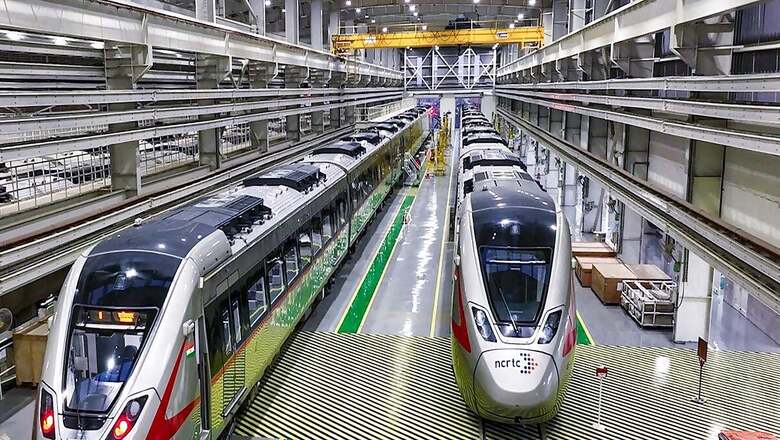
views
Authorities are gearing up for the extension of 25 km on the Regional Rapid Transit System (RRTS) beyond Duhai up to the Meerut South section and for that the operations on the existing stretch will be suspended on January 20 and 21.
In a statement, the National Capital Region Transport Corporation (NCRTC), the agency building the RRTS, announced that currently, trial runs are being conducted on the section between the Duhai and Meerut South stations.
In the next two days, efforts will be focused on organising and facilitating the installation, upgrading the signalling system, conducting extensive testing, and completing other related tasks required for operating on the forthcoming 25-km section beyond Duhai and Meerut South.
“Namo Bharat train services on the 17 km long priority section between Sahibabad to Duhai Depot will be unavailable for passengers’ operation for two days i.e., Saturday January 20 and Sunday January 21,” the statement said.
Regional Rapid Transit System is a high-speed rail-based commuter transit service. It is a new, dedicated, and comfortable commuter service, connecting regional nodes in NCR, initially planned in 1998-99.
It provides reliable, high-frequency, and point-to-point regional travel at high speed along dedicated pathways. It connects a number of smaller cities with bigger cities, decongesting the region while ensuring better work opportunities.
It is not Metro and also not the conventional railway. It is the best of both, say officials. When compared to Metro, RRTS caters to passengers looking to travel a relatively longer distance with fewer stops and at higher speeds. When compared to conventional railway, it is faster, more reliable, and frequent.
NCRTC has implemented European Train Control System (ETCS) Level 2 with critical interfaces like ETCS communication backbone over Long Term Evolution (LTE) for the first time in the world.
To ensure passenger safety and seamless operations rigorous testing is required, said officials.
“During these two days, activities such as interface testing and the integration of the onboard signalling system with rolling stock will be conducted. Additionally, the examination of new software for Interlocking, Radio Block Center, LTE EPC (common for the entire corridor), and Ethernet Virtual Circuit (EVC) will be carried out,” said the statement.
Regular train operations will recommence on their usual schedule following the completion of the signalling work starting from Monday.
The suspension of operations on Saturday and Sunday is aimed at minimising the impact on commuters, the NCRTC added.
The 25-km stretch between the Duhai and Meerut South stations is the next segment of the RRTS corridor set to be operationalised for the public after the priority section.
This section encompasses four stations: Murad Nagar, Modi Nagar South, Modi Nagar North, and Meerut South.
The construction of the viaduct up to Meerut South has already been completed. Subsequently, various system works, including “track-laying, OHE installation, signalling and telecom, and electrical”, have been advancing rapidly in this section, officials said.
In October 2023, the first stretch of the Delhi-Meerut Regional Rapid Transit System (RRTS) was inaugurated.
This 17-km stretch is in Ghaziabad, covering Sahibabad, Ghaziabad, Guldhar, Duhai, and Duhai Depot.















Comments
0 comment